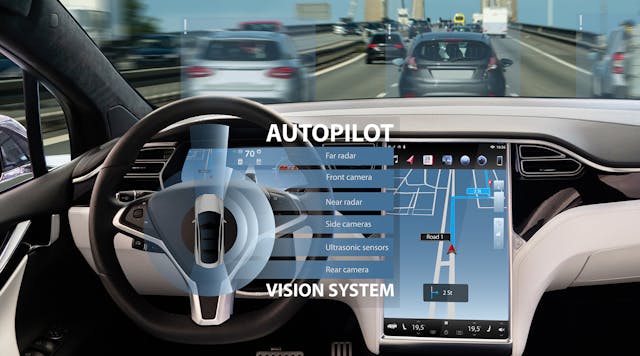My Insight Hub
Your go-to source for daily insights and updates.
Why Your Next Car Might Just Be a Robot Chauffeur
Discover why a robot chauffeur could be your next ride! Uncover the future of driving and convenience in our latest blog post.
The Future of Driving: 5 Reasons to Consider a Robot Chauffeur
The evolution of technology is transforming every aspect of our lives, and driving is no exception. As we move towards a more automated future, robot chauffeurs promise to redefine our driving experience. Here are five reasons to consider making the switch:
- Safety: Autonomous vehicles are designed with advanced safety features that significantly reduce the likelihood of accidents. According to a report by the National Highway Traffic Safety Administration, human error is a major factor in 94% of crashes. Robot chauffeurs can help mitigate this risk.
- Convenience: With a robot chauffeur, you can free up your time during commutes. Instead of focusing on the road, you can catch up on work or relax. Imagine being able to read a book or take a nap during your daily drive.
- Cost-Effectiveness: Over time, using a robot chauffeur could save money on fuel, insurance, and maintenance. A study by McKinsey & Company suggests that autonomous driving technology could eventually lower transportation costs significantly.
- Environmental Impact: Many autonomous vehicles are designed to be electric, which means they can contribute to reduced emissions and a cleaner environment.
- Accessibility: Robot chauffeurs can provide transportation for individuals who may be unable to drive themselves, enhancing mobility and independence for the elderly or disabled.

Are Autonomous Vehicles Safe? Debunking Myths About Robot Chauffeurs
As technology evolves, the debate around the safety of autonomous vehicles (AVs) continues to intensify. Many people believe that these robot chauffeurs are fundamentally unsafe due to dramatic headlines surrounding accidents. However, studies suggest that AVs have the potential to reduce traffic accidents significantly. According to the Insurance Information Institute, up to 94% of serious crashes are caused by human error, highlighting that replacing human drivers with automated systems could lead to fewer accidents over time. This shift urges us to reconsider common misconceptions about AV safety.
Another prevalent myth is that autonomous vehicles lack the ability to respond to unpredictable scenarios. In reality, AVs are equipped with advanced sensors and algorithms designed to process data faster than human drivers. Their ability to react is not only based on processing speed but also on continuous learning from vast amounts of driving data. The National Highway Traffic Safety Administration emphasizes that while AVs are not infallible, their design and technological advancements significantly enhance road safety under various conditions. As we continue to develop this technology, addressing these myths will be crucial in shaping public perception and acceptance.
How Robot Chauffeurs are Revolutionizing Urban Transportation
The advent of robot chauffeurs is set to revolutionize urban transportation by introducing a new era of efficiency and convenience. These autonomous vehicles utilize advanced technologies such as artificial intelligence, machine learning, and real-time data processing to navigate complex urban environments. According to a report by Forbes, these vehicles not only enhance accessibility for those unable to drive but also significantly reduce traffic congestion and emissions through optimized routing and carpooling options.
Furthermore, the integration of robot chauffeurs into existing transport systems promises to alleviate some of the biggest challenges cities face today. With services like Waymo and Tesla leading the charge in deployment, many urban areas can look forward to fewer accidents caused by human error and more efficient public transit options. As highlighted in a study from International Journal of Transportation and Traffic Engineering, the widespread adoption of these technologies could lead to a more sustainable urban landscape, where vehicles are primarily shared rather than owned, ultimately transforming how we think about mobility.